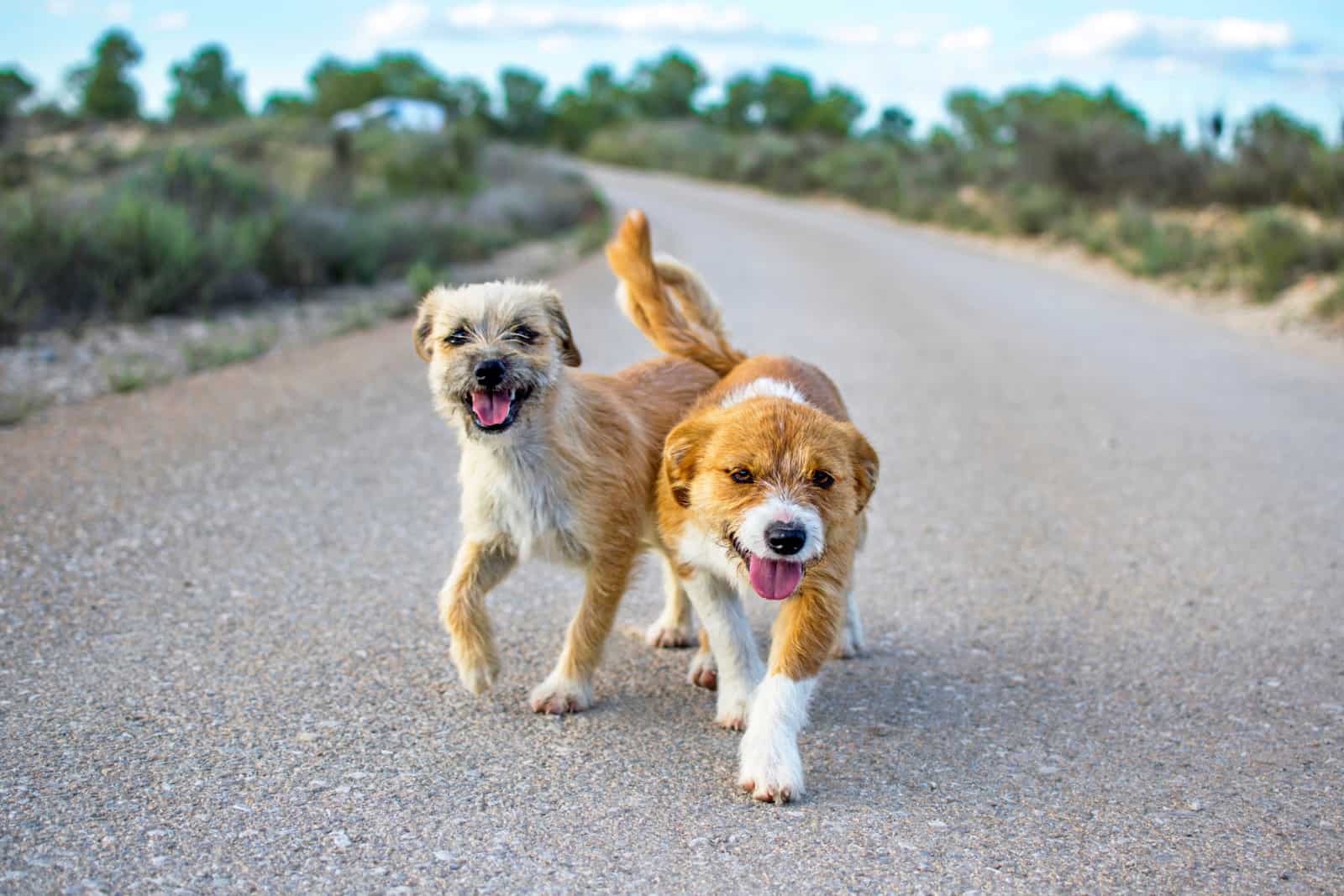A situation where you have to walk by a group of unfamiliar dogs or just one dog is always challenging. It doesn’t matter if it’s a stray dog or an unleashed, unknown dog – we don’t know if the dog is going to get aggressive or not.
Maybe our dog will act aggressively, too, and then we have a very complicated and serious situation of a possible dog fight.
So, what is the proper way to react or the proper thing to do when you are out walking your dog, and you know there is a chance you’ll come across a stray or another pet dog?
Well, the answer is not that simple.
You will need to teach your dog some doggy manners first so that you can go out and react to other dogs in a proper way.
After all, if we want a change in the world, we have to start with ourselves first.
Here are 5 tips on what to do about other dogs and strays on walks.
What To Do About Other Dogs And Strays On Walks
Walking your dog has many benefits for you and for your dog. It makes you both physically active, and it is the perfect way to bond with your dog.
It is also necessary because a dog has to go do its business, and it needs a proper amount of both physical and psychological stimulation.
But, we are not the only ones with a dog. Unless you live in rural Australia where your closest neighbor is a few miles away, then you’ll have to worry about kangaroos.
However, in everyday life, we have to worry about strays and other dogs on our usual daily walks.
So, what can you do about it? Fight or flight? Hopefully none.
Here’s what you need to do before and during a walk.
Read next: How Often Do You Walk Your Dog?
1. First, Teach Your Dog A Command
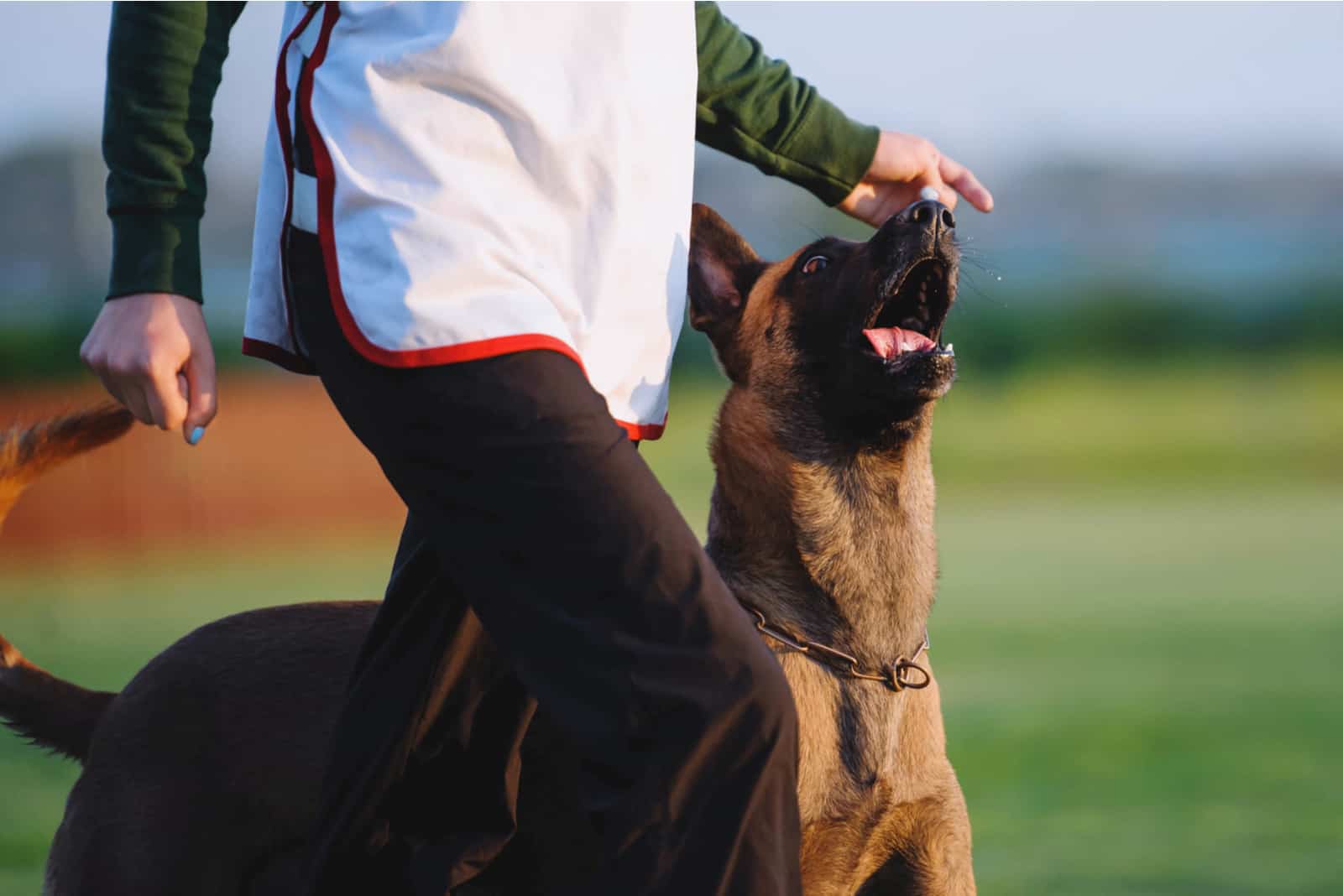
You can’t go out on a walk if you don’t have a well-behaved dog. So, the first thing you have to do before leaving the house with your dog is teach him the “leave it” command.
It’s a quite simple command, and it doesn’t take too long for your dog to learn it. You don’t have to have one of the smartest dogs in the world for this command.
This is basic and necessary for anything you do in the future with your dog.
How To Do It
You need lots of dog treats and patience. If you don’t have a yard, you can go out on the street with your dog (on a leash) and practice there. Don’t come close to other people or dogs, or whatever draws your dog’s attention. Keep a distance.
Let’s say there is another dog on the other side of the street. Here are the steps:
- When your dog focuses on the other dog, clearly say “leave it” or “stop”
- After giving the clear command, turn your dog away from the other dog (use the leash to turn him around)
- Give your dog a treat, and say, “good boy”!
- Repeat
- When the dog stops reacting at that distance, shorten the distance
- If it can’t listen to you at the new distance, go back to the previous one
- Repeat until there is no reaction no matter the distance
Soon, your dog won’t react to other dogs, cats, or whatever else you want him to stay calm about. But, you can’t do this just two or three times. You have to repeat this command as many times as it takes until the dog doesn’t react to other dogs unless you allow him to.
2. Ignore Other Dogs
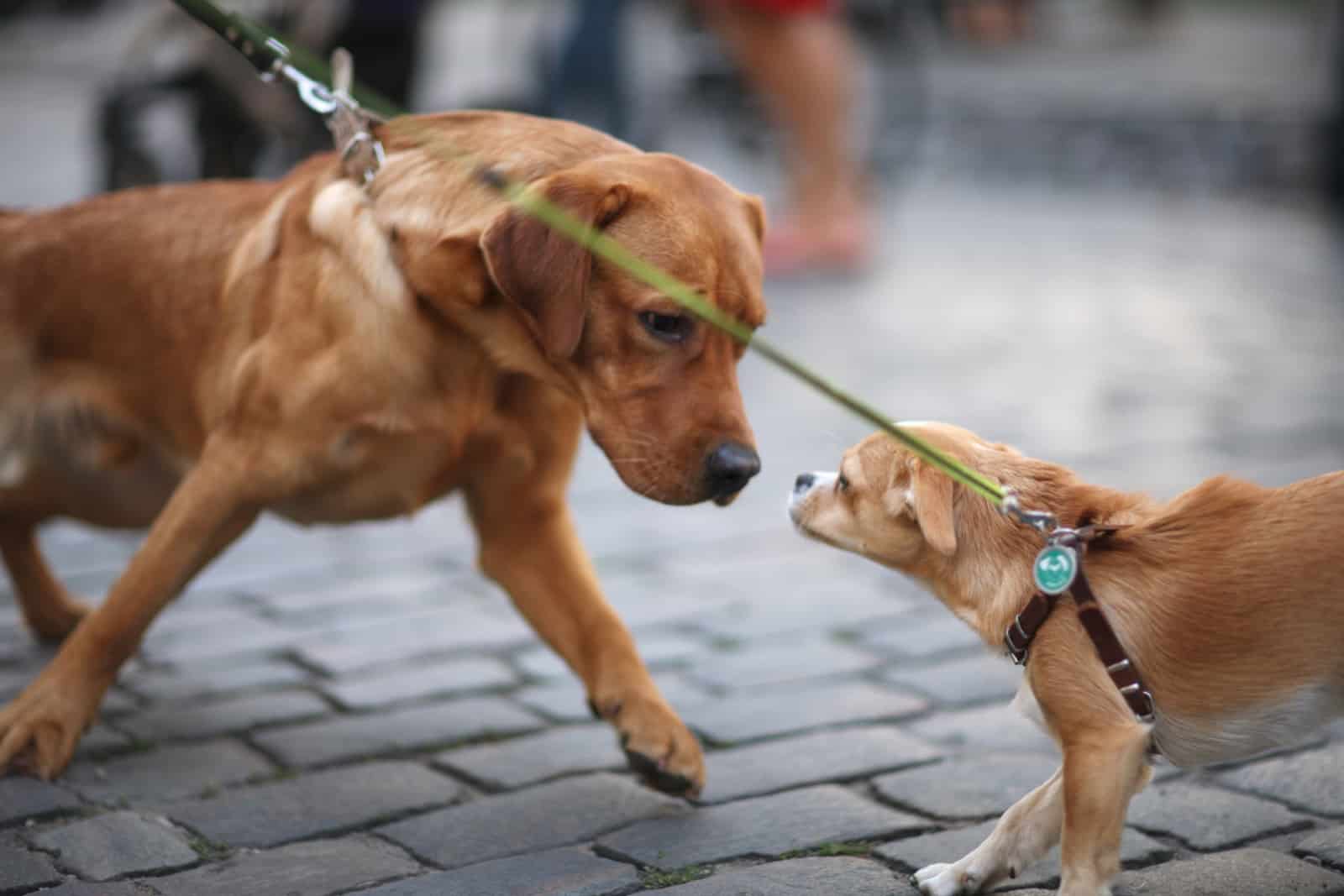
This can be a tricky thing to do because our instincts can kick in and make us nervous. But, remember one thing: when we are nervous, our dogs are nervous, too. Your dog can be as small as a Chihuahua or as big as a Great Dane, but if they sense you are nervous, they will get nervous, too, and act defensively.
By ignoring other dogs, I don’t mean look at your phone, and don’t be aware of what is going on around you. Be aware of your surroundings at all times. It is called situational awareness, and it is very important when you take your dog for a walk.
Here’s what it all means:
- Notice other dogs, but don’t make a fuss about it – stay calm
- Be aware of their movements, but don’t run or panic
- Don’t assume every dog is friendly – they are not
- If your dog focuses on other dogs, use the “leave it” command
- Change the path you’re walking on if you have to
Situational awareness doesn’t mean being on alert at all times. It means scoping your surroundings with a clear and calm mind so you know what might happen. If you see a group of stray dogs far in front of you, you can change your path.
If you hear a barking dog, look around to see where it comes from, etc.
3. Always Keep An Eye On Your Dog
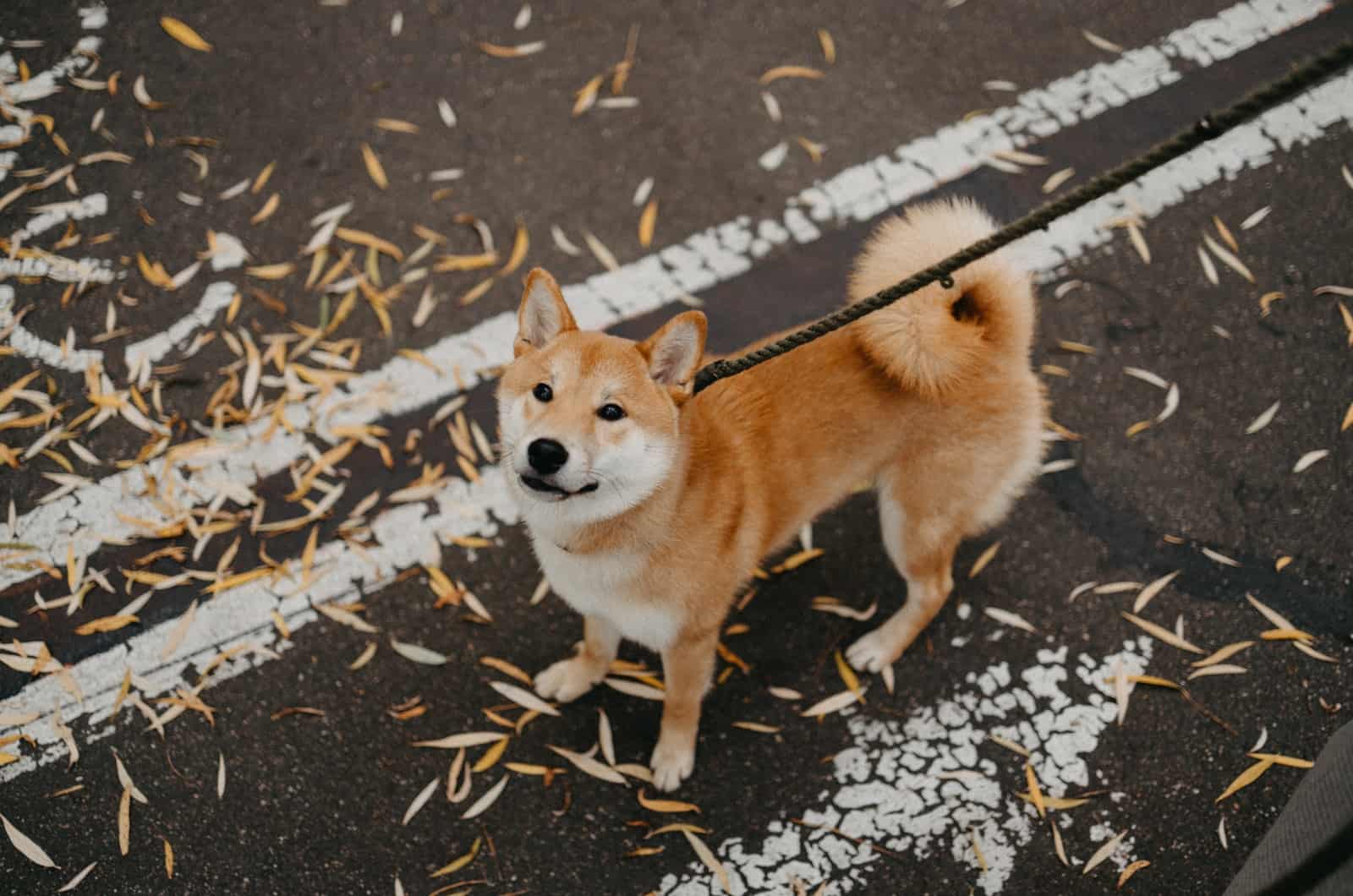
This should be one of those things that we don’t have to mention, but unfortunately, that’s not the case. So many people focus on their phones, friends they see on a walk, or anything else, and they don’t keep an eye on their dogs.
Usually, people say it’s because they know their dogs are good, and won’t hurt anyone. That might be true, but you never know how protective your dog is of you, and to what lengths he will go to protect you.
Most dogs will do whatever it takes to protect their owner, and that means fighting and biting anything that wants to hurt you.
Also, your dog might be well-behaved and properly socialized, but you don’t know that about other dogs. That’s why you need to teach your dog the “leave it” command so that he won’t come to other dogs unless you allow him to.
4. Be Prepared For A Fight
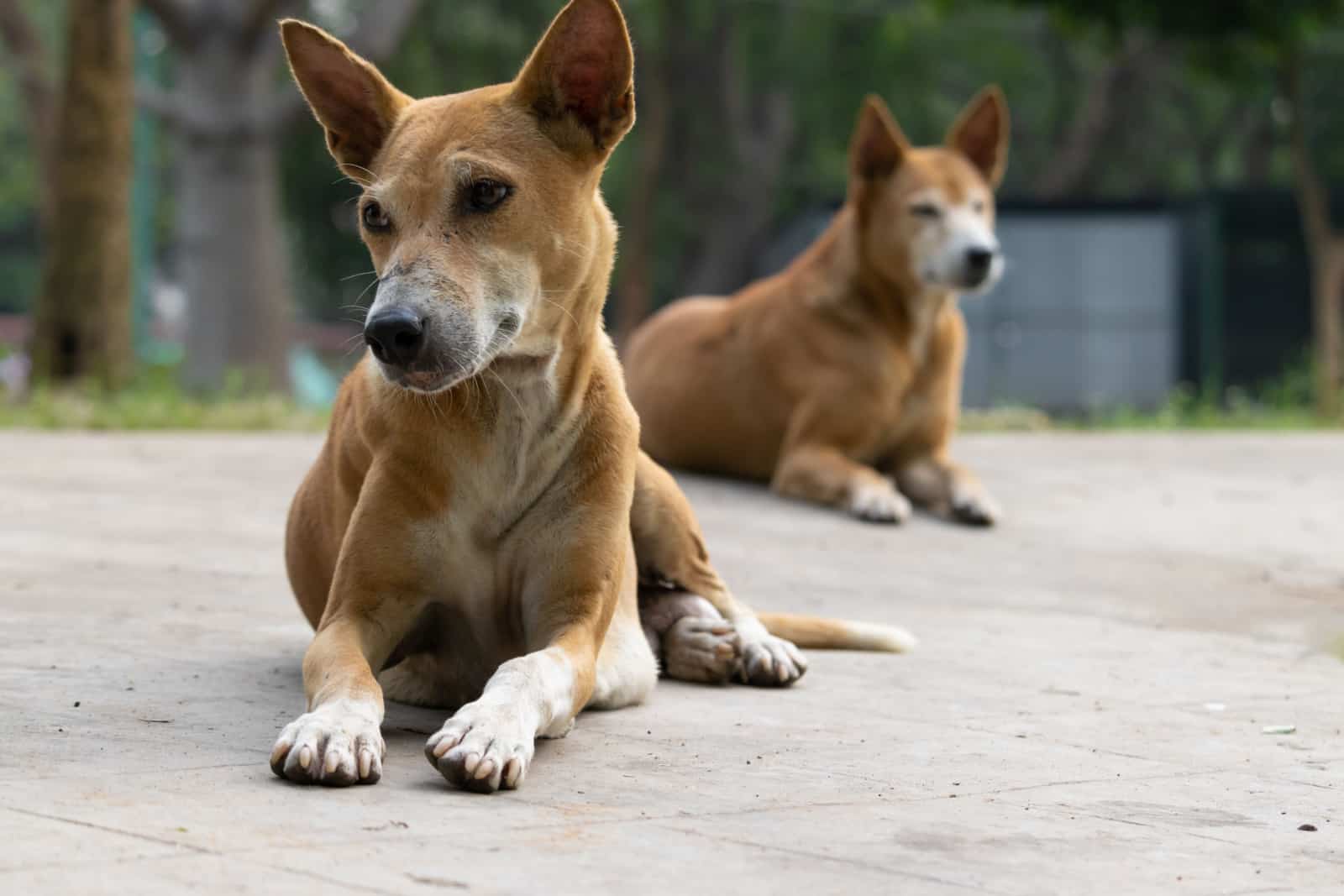
This is a harsh reality. Sometimes, when a stray or another dog comes at you and your dog, they want to fight.
There are two ways this can go…
1. The Dog Barks
If you walk your dog, and you see another dog coming towards you barking, you have to:
- Stop
- Put your dog behind you
- Loudly say, “stop”!
- Stomp one foot, but don’t run toward the dog
In 99% of the cases, a dog will stop when you do this. They will continue barking, but they won’t continue moving toward you. If the dog stops, that is a good sign. Don’t turn your back on the dog! Stay calm and confidently wave your hand to tell the dog to go away.
People who have experienced this said that it helped if they had a stick or a walking stick in their hands to wave with them.
They also said they would slowly back away, never losing sight of the dog that was barking.
This is why it’s important to have an obedient dog that will listen to your “leave it” command. The last thing you want is your dog running toward the other dog.
2. If A Dog Doesn’t Want To Stop
This is a part where there are no rules on what to do. An aggressive dog that doesn’t stop when a human says something and waves hands or a stick wants to fight. The best option would be to climb up with your dog onto a nearby car.
If there is nowhere to hide – start yelling, use your handbag, backpack, and if you have time, use your phone to play a loud noise… whatever helps to stop the dog.
People who had a bad experience like this bought a stun gun or an air horn to bring with them. They had to learn from a bad experience, but you can buy these things right away.
It seems inhumane to use a stun gun on a dog, but it is the best option when it comes to these situations. It won’t leave permanent damage on the dog, and it is a much better and more humane option than hitting a dog.
Take a look at this video and see the issue from two sides: Police Use Taser On A Dog.
If your dog was attacked by a much bigger dog, and you know you have to do something or else your dog will die because the other dog has your dog by its neck, will you use the stun gun or think about what people might say?
A stun gun will temporarily confuse and paralyze the dog’s muscles, leaving you enough time to take your dog somewhere safe.
5. Learn Dog Language
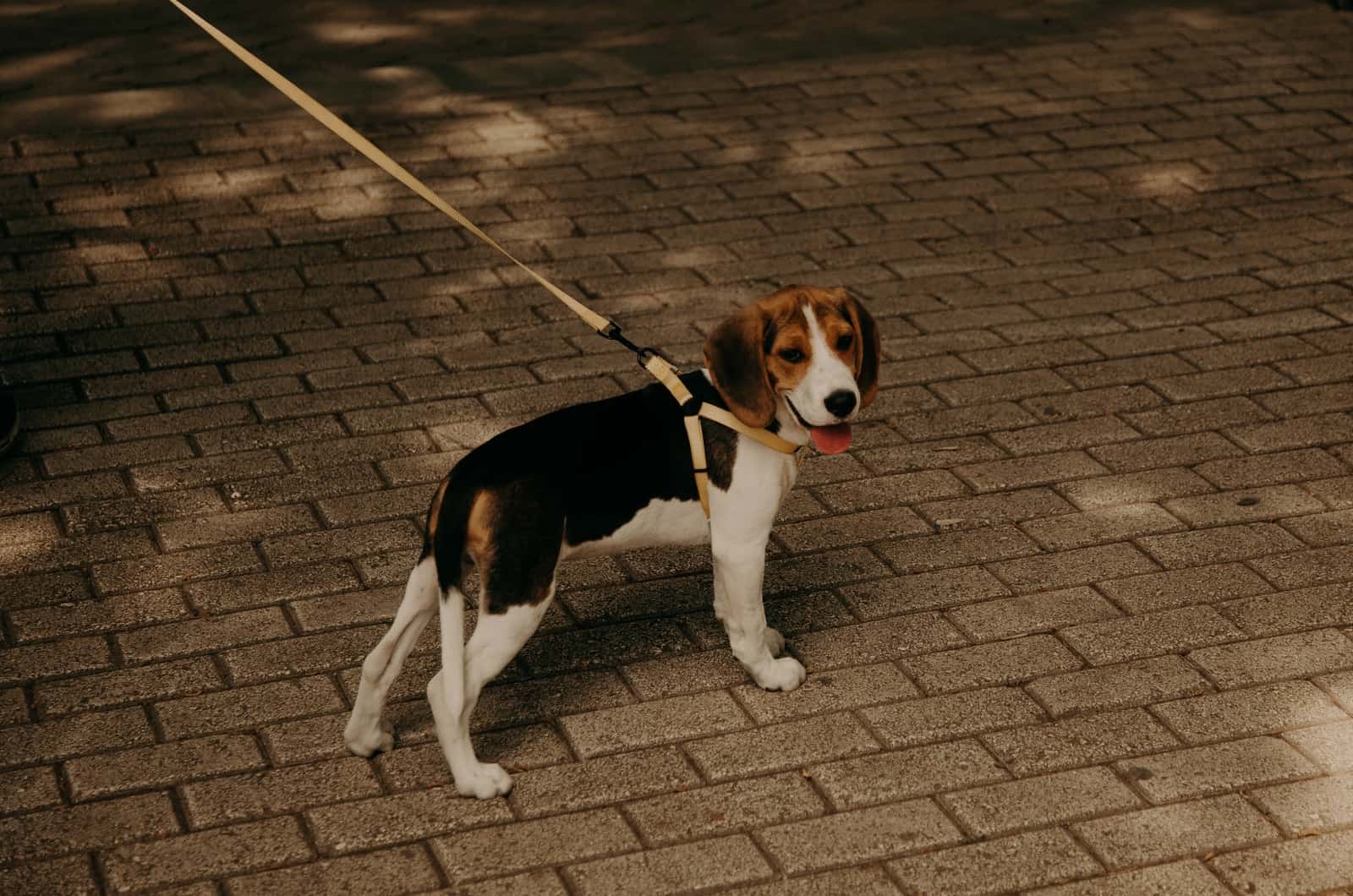
Owning a dog also means learning about the way they express their feelings. You can tell a lot about a dog by looking at its tail position. But, there is more to it than that.
Learn what it means when a dog is barking, lunging, corn cobbing, etc. Stay away from dog parks until you are certain you can help your dog if the situation calls for it.
Talk to other dog owners to walk you through dog behavior in a dog park. However, if you are new to all of this, dog parks can be a very scary place for your dog, so it’s best to wait until your dog is a bit older.
Here is a video about Dog Park Etiquette: DP Etiquette.
The Conclusion
Walking your dog can be tricky when you have a neighborhood dog that often tries to fight your dog. It is trickier when it happens all of a sudden, and when the dog is unknown or a stray. So, my personal recommendation is to get yourself a stun gun.
And, absolutely teach your dog basic obedience commands, like stop, sit, come, leave it, etc. This will help you in so many cases where all it takes is to prevent your dog from reacting to another dog.
Learning about dog language helps you prevent situations as well. Most dogs won’t actually attack anyone they want to dominate. Learning to recognize what it means when a dog either wags its tail low to the ground or up high also makes a difference.
So, to sum it up: prepare yourself before going on a walk, both in knowledge and in defensive objects.
